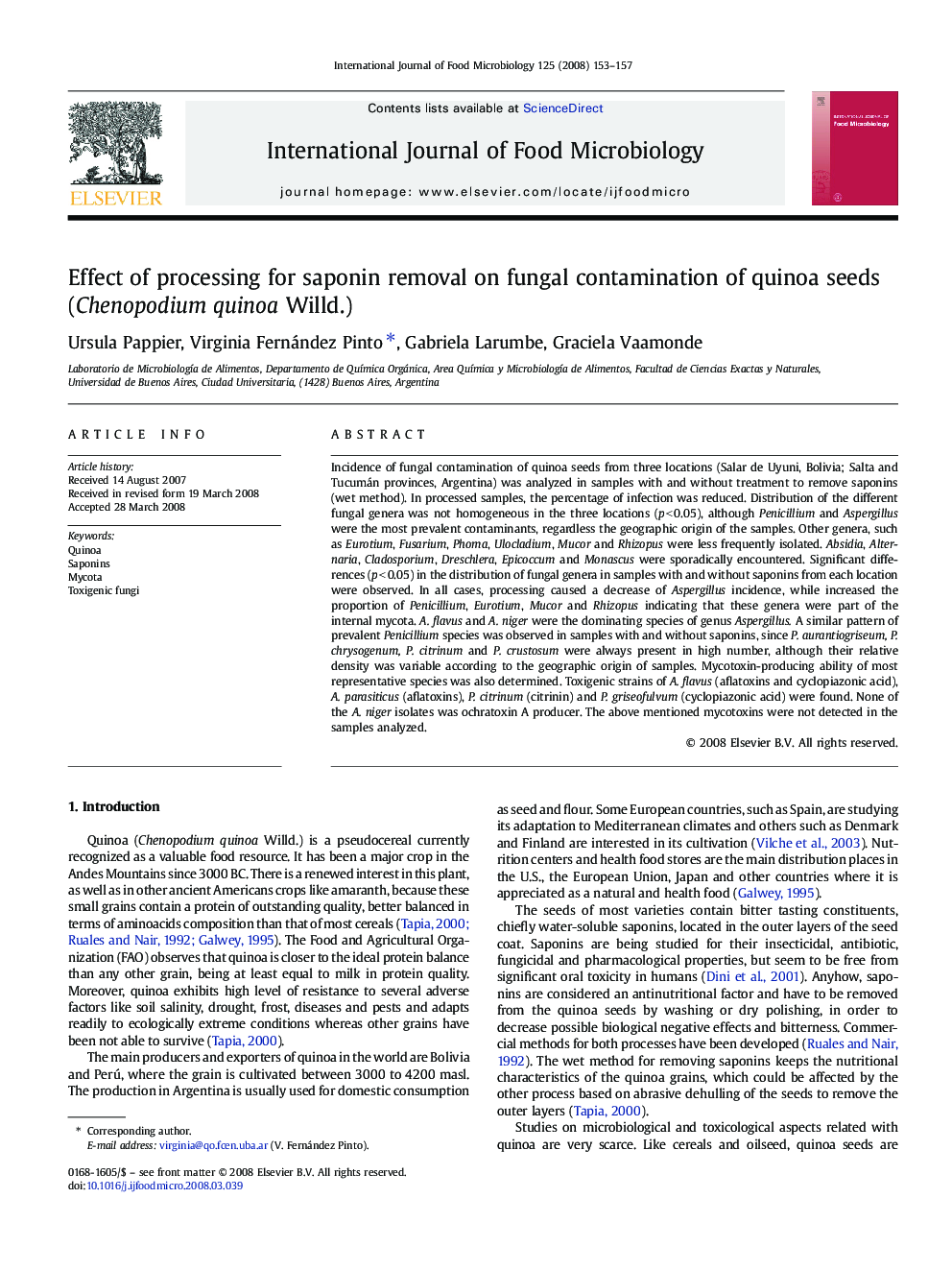| کد مقاله | کد نشریه | سال انتشار | مقاله انگلیسی | نسخه تمام متن |
|---|---|---|---|---|
| 4368973 | 1616723 | 2008 | 5 صفحه PDF | دانلود رایگان |

Incidence of fungal contamination of quinoa seeds from three locations (Salar de Uyuni, Bolivia; Salta and Tucumán provinces, Argentina) was analyzed in samples with and without treatment to remove saponins (wet method). In processed samples, the percentage of infection was reduced. Distribution of the different fungal genera was not homogeneous in the three locations (p < 0.05), although Penicillium and Aspergillus were the most prevalent contaminants, regardless the geographic origin of the samples. Other genera, such as Eurotium, Fusarium, Phoma, Ulocladium, Mucor and Rhizopus were less frequently isolated. Absidia, Alternaria, Cladosporium, Dreschlera, Epicoccum and Monascus were sporadically encountered. Significant differences (p < 0.05) in the distribution of fungal genera in samples with and without saponins from each location were observed. In all cases, processing caused a decrease of Aspergillus incidence, while increased the proportion of Penicillium, Eurotium, Mucor and Rhizopus indicating that these genera were part of the internal mycota. A. flavus and A. niger were the dominating species of genus Aspergillus. A similar pattern of prevalent Penicillium species was observed in samples with and without saponins, since P. aurantiogriseum, P.chrysogenum, P. citrinum and P. crustosum were always present in high number, although their relative density was variable according to the geographic origin of samples. Mycotoxin-producing ability of most representative species was also determined. Toxigenic strains of A. flavus (aflatoxins and cyclopiazonic acid), A. parasiticus (aflatoxins), P. citrinum (citrinin) and P. griseofulvum (cyclopiazonic acid) were found. None of the A. niger isolates was ochratoxin A producer. The above mentioned mycotoxins were not detected in the samples analyzed.
Journal: International Journal of Food Microbiology - Volume 125, Issue 2, 15 July 2008, Pages 153–157